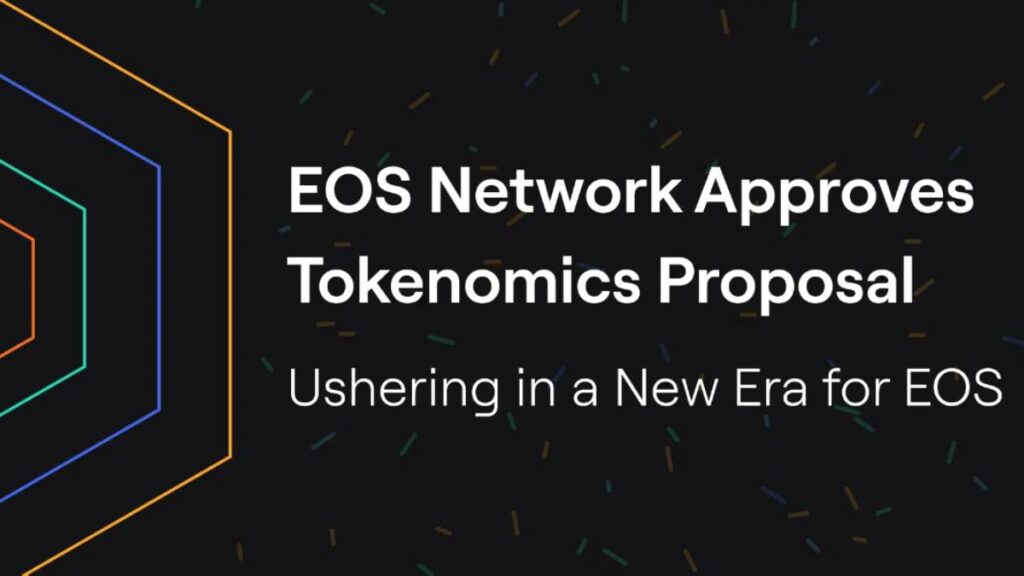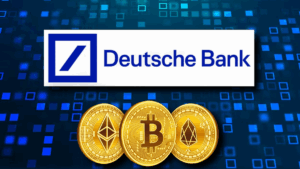TL;DR
- The EOS Network Foundation (ENF) has approved a new tokenomic model for the EOS ecosystem.
- The fixed supply of tokens will be 2.1 billion, eliminating inflation and making the economic environment more predictable.
- Halving cycles will be introduced every four years and staking rewards and middleware operations will be improved.
The EOS Network Foundation (ENF) has announced the approval of an innovative tokenomic model for the EOS ecosystem, marking a significant milestone in the evolution of the network.
This proposal, approved by a supermajority of EOS network block producers, will be implemented on the mainnet on June 1, following the time-deferred execution of the multisig (MSIG) proposal.
The #EOS Network Block Producers have reached a super majority consensus to approve the new tokenomics model proposal! 🥳
Upon time delayed execution of the MSIG on June 1, network inflation will be permanently halted and $EOS FDV will be reduced by 80%!https://t.co/By9UPRL3Tx pic.twitter.com/2yjVqo2M7m
— EOS Network Foundation (@EOSNetworkFDN) May 31, 2024
One of the most notable changes of this new model is the transition from an inflationary token supply, with a maximum of 10 billion tokens, to a fixed supply of 2.1 billion tokens.
This change will eliminate inflation, creating a more stable and predictable economic environment for network participants.
Additionally, the Fully Diluted Value (FDV) of EOS will be reduced by 80%, strengthening the long-term value proposition for token holders.
The new model will also introduce halving cycles every four years.
These cycles will control the entry of new tokens into the market, ensuring a regulated and constant distribution.
This approach aims to moderate the supply of tokens and avoid an overabundance that could destabilize their value.
To improve the experience of users and developers in the transition between Web2 and Web3 technologies, immediate funding will be allocated to middleware operations.
This funding will focus on closing the usability gap, allowing for a more fluid and efficient integration between both technologies.
A critical component of the new model is the allocation of 350 million EOS tokens to the RAM market.
This allocation is intended to ensure sufficient supply and provide the necessary liquidity to foster the growth and accessibility of the RAM market, which currently has a market capitalization of $300 million.

Incentives and Active Participation in EOS
To encourage long-term engagement and active participation in the network, high-yield staking rewards will be introduced, along with adjustments to the staking lock-in period.
These measures are designed to incentivize participants to hold and stake their tokens on the network for extended periods, thereby strengthening security and stability.
Yves La Rose, founder and CEO of the Foundation, has underlined the importance of this new tokenomic model, calling it a “historic occasion” for the community.
La Rose highlighted that establishing a fixed token supply and adding new economic mechanics is crucial to ensuring a sustainable and prosperous future for the EOS ecosystem.
According to him, these changes will not only stabilize the token economy, but will also promote active participation and growth within the network.
The EOS Network Foundation remains committed to innovation and growth within the ecosystem.
This tokenomic upgrade is a vital step in unlocking the full potential of the EOS blockchain, laying the foundation for a dynamic and robust economic environment.
With these improvements, the EOS network is preparing for a new era of development and stability, reflecting the collective effort of the community to improve the stability and economic growth of the network.












